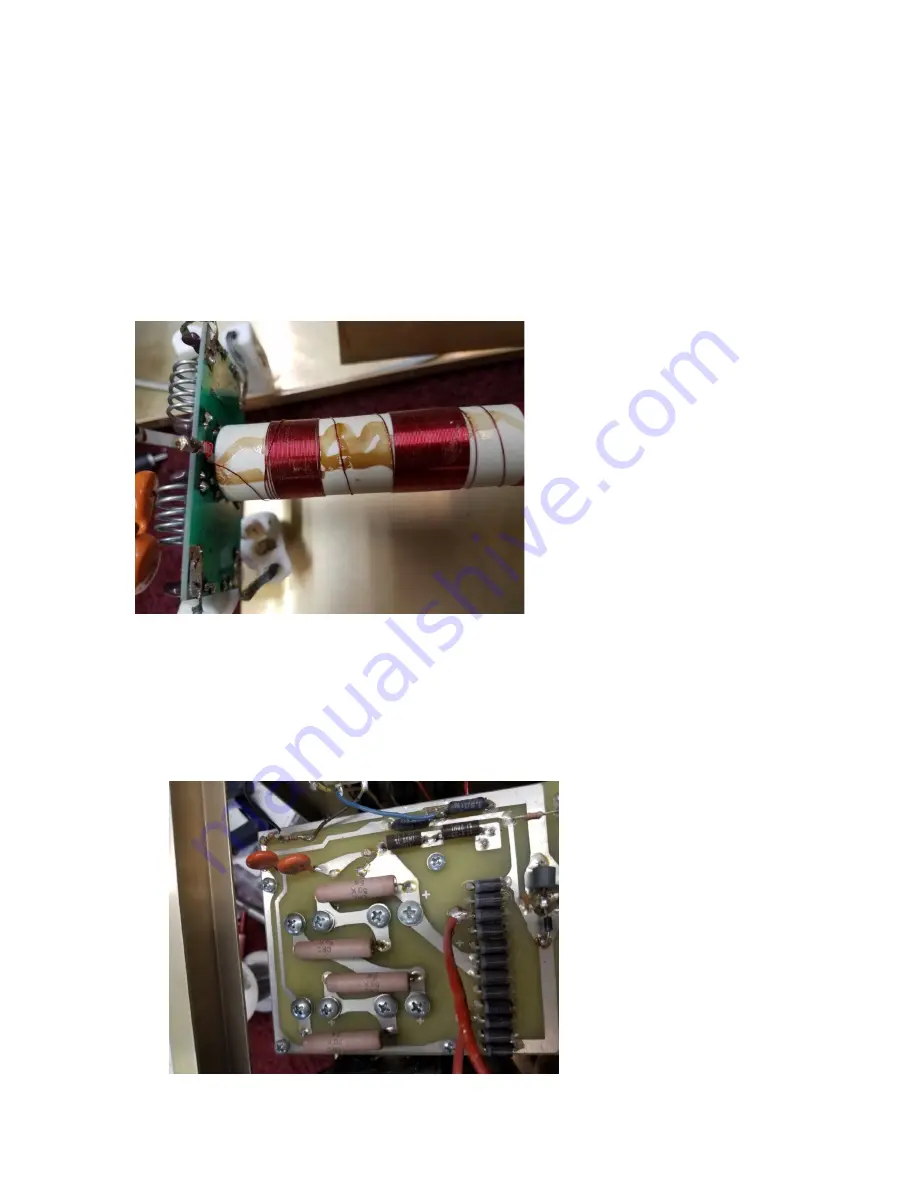
Check all the solder connections carefully.
If the plate choke has loose or overlapped wires it needs to be “re-glued”. You can make your own Q-dope
from a mix of lacquer thinner or Xylene and white styrofoam “peanuts” used for packing. Dissolve the white
packing peanuts or other Styrofoam in thinner until it is a thick paste. Paint the paste on the coil to hold the
windings in position and allow it to dry. A dot of Gorilla Glue is fairly good end-glue at winding ends.
(Fig. 19)
If your amplifier has tan or sand color bleeder resistors, they should be changed. The bleeders have proven to
be failure prone. When they fail they ruin all four electrolytic filter capacitors. A 50k to 100K higher reliability
resistor of suitable wattage must be used. I sell suitable resistors and superior filter capacitors in a kit.
The small meter protection diode on the very center far right below the ferrite bead gets changed to a larger
diode that is supplied in the kit.





































